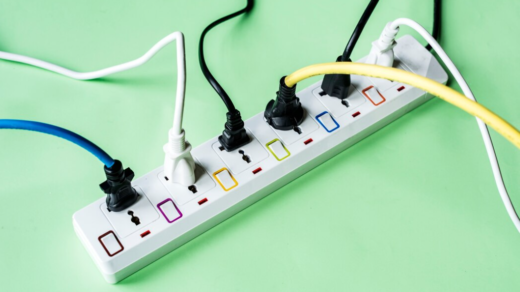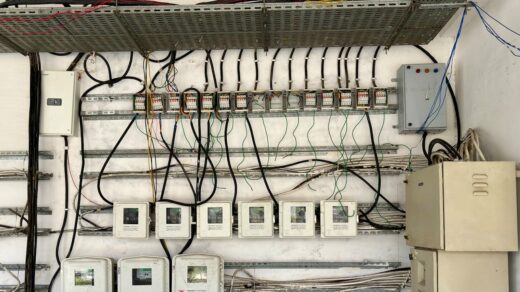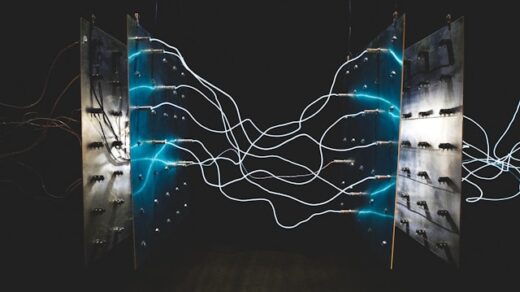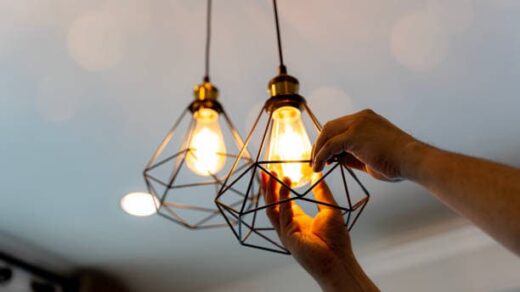Selecting the right lighting for your home involves navigating through a myriad of choices. The primary bulb types available are CFL, incandescent, halogen, and LED, with each requiring a specific lumen level to achieve the desired brightness.
In Seattle, WA, LED lighting has witnessed a surge in preference. Our team, with its profound expertise in lighting solutions, is here to guide you. Here’s a breakdown of the benefits and drawbacks of LED lighting.
Advantages of LED Light Bulbs
- Exceptional Longevity: LED light bulbs boast the most extended durability among all lighting options. Research indicates that LED bulbs can endure for a minimum of 50,000 hours, and in some cases, even up to 100,000 hours. Some variants can also remain functional for 75,000 hours. In contrast, traditional incandescent bulbs typically last about 2,000 hours. Just like any other light source, the frequent switching on and off of an LED bulb can slightly reduce its longevity. Hence, bulbs subjected to frequent toggling may have a reduced life expectancy;
- Superior Energy Efficiency Beyond their impressive lifespan, LED bulbs stand out for their energy conservation attributes. This feature further underscores their value as a smart investment. Research has found that LED bulbs achieve an energy efficiency level that’s approximately 80% greater than traditional incandescent bulbs. They even surpass Compact Fluorescent Lights (CFLs) in terms of efficiency. To put this into perspective, while an incandescent bulb requires 60 watts of power to emit a certain brightness, its LED counterpart requires merely 10 watts. Another noteworthy benefit is the LED bulb’s instantaneous illumination upon switching on. Unlike other bulb types that need to warm up to reach their full brightness, LEDs light up instantly. Particularly in colder weather, incandescent bulbs might flicker until they reach their operational temperature;
- Minimal Heat Emission: One of the commendable characteristics of LED bulbs is their efficiency in converting energy: they emit 80% as light and only 20% as heat. This contrasts with halogens, which can become scorchingly hot to the touch when in use, posing a risk of burns or even fire if they break. While incandescent bulbs also generate significant heat, they are not as extreme as halogens;
- Eco-Conscious Choice: LED bulbs stand out as a green alternative in the world of lighting. A significant point in their favor is the absence of mercury, a harmful substance found in CFL lights. Furthermore, the energy efficiency of LED bulbs translates to a reduced carbon footprint, making them an eco-friendly choice. In terms of durability, LED bulbs have a robust construction. Unlike incandescent bulbs where a slight jolt can break the filament inside, LED bulbs can endure minor mishaps and continue to function. This resilience makes them a top choice for applications like Christmas lights, significantly reducing the frustration of individual bulbs failing in a string of lights. LEDs are designed for longevity and are less prone to breakage or malfunction.
Limitations of LED Light Bulbs

- Initial Cost Can Be High; Often, product prices are influenced by longevity and features. For instance, a computer with more memory demands a higher price. Similarly, a high SEER-rated AC unit, denoting energy efficiency, comes with a steeper price. LED bulbs align with this trend. Due to their extended lifespan, they command a higher initial cost, positioning them as a long-term investment. While cheaper bulbs may suffice in emergency situations, for prolonged use without frequent replacements, the investment in LEDs is recommended;
- Dimming Challenges: Dimmers have become an integral part of modern lighting systems, enabling users to tailor the illumination levels to their preferences and the mood of the room. They offer versatility in creating desired atmospheres, from cozy and intimate to bright and energetic. However, when it comes to LED bulbs, there are some nuances to be aware of. Unlike their traditional counterparts, not all LED bulbs seamlessly integrate with standard dimmers. This is because LEDs operate differently from conventional bulbs, requiring specific electrical conditions to dim without flickering or failing prematurely. To ensure an optimal dimming experience with LED bulbs, it’s essential to choose dimmer switches that are explicitly engineered for LED compatibility;
- Sensitivity to Heat: While LED bulbs are celebrated for their energy efficiency, they are not impervious to the challenges posed by heat. Extended exposure to elevated temperatures can jeopardize their performance and lifespan. Implementing protective measures, such as using lampshades or sconces, can assist in mitigating heat buildup. Moreover, flickering in an LED bulb can be indicative of electrical incompatibilities, often pointing to issues with its transformer or driver. It’s crucial to ensure that the supporting infrastructure aligns well with LED specifications to guarantee optimal performance;
- Directional Lighting: LED bulbs primarily provide directional light. A notable characteristic of many LEDs is their frosted appearance, which aids in dispersing light uniformly. This frosted texture distinguishes them from incandescent or halogen bulbs. When the time comes to replace an LED bulb in certain fixtures, be aware that some fixtures have integrated LEDs, requiring a complete fixture replacement. However, given the long life of LED bulbs, users typically derive substantial utility before needing a replacement.
The Evolution and Benefits of LED Technology

Over the decades, LED (Light Emitting Diode) technology has witnessed significant advancements and has transformed the lighting industry:
- Historical Progression: The journey of LED technology began in the 1950s, initially designed for niche applications. It wasn’t long before innovators recognized its broader potential and began adapting it for widespread use;
- Spectrum of Colors: Initially, LED lights were only available in basic hues like red and green. By the 1980s, the spectrum broadened with the introduction of Super-Bright LEDs, showcasing colors like yellow, bright red, and vibrant green. The innovation continued with the creation of ultra-blue light in 1994;
- Breakthrough in White Light: The production of white LED light marked a pivotal moment in LED evolution. Recognizing its potential, institutions like the U.S. Department of Energy heavily endorsed its adoption;
- Ongoing Innovations: The LED technology landscape is ever-evolving. One of the more recent developments includes the introduction of ultra-violet black light;
- Efficiency and Longevity: Among the various lighting technologies available, LEDs stand out for their superior energy efficiency and longer lifespan. Their durability and efficiency ensure that they offer value for money in the long run, often recouping their initial costs before needing replacement.
Conclusion
The realm of LED lighting offers a blend of both remarkable advantages and a few noteworthy limitations. From their unparalleled lifespan and energy efficiency to the challenges they pose with dimmers, LEDs present a multi-faceted profile. Over the years, LED technology has not only evolved but has revolutionized the lighting industry, showcasing significant milestones and continuous improvements. While they might require a higher initial investment, the long-term benefits in terms of energy savings, longevity, and environmental impact make LEDs a wise choice for those seeking a sustainable and efficient lighting solution. As consumers and homeowners in places like Seattle continue to prioritize both environmental responsibility and cost-effectiveness, the trajectory of LED lighting seems promising.








